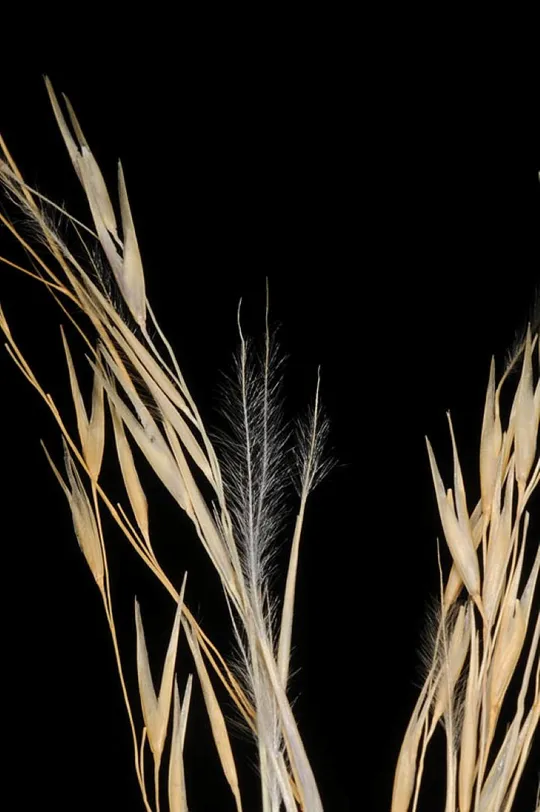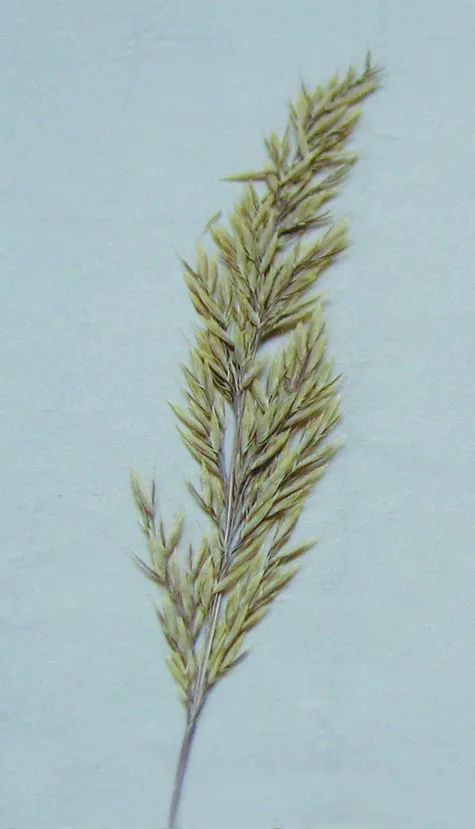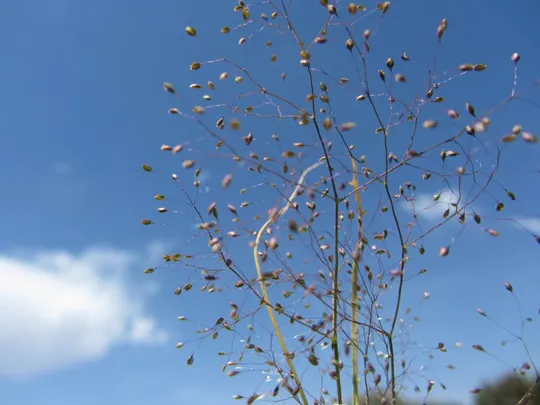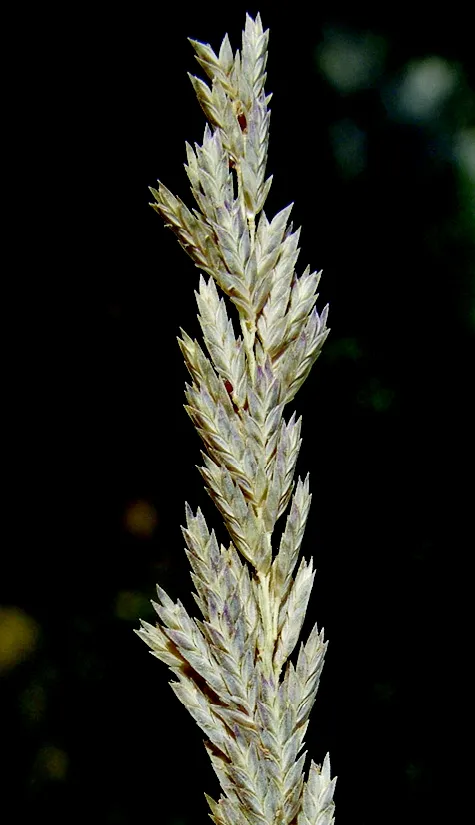Stipagrostis drarii

In the extreme desert of Saudi Arabia Stipagrostis drarii
is used as food for camels (Chaudhary, 2001)
In Israel Stipagrostis drarii grows only in the Arava and was discovered by Avinoam Danin
as a new species for Israel in 1994 (Danin, 1994). The specimen in the
Herbarium was collected in 1997. It was found in Sdot Lotan north of Ktura,
and has not been found in any other location.
Deep sand plains
and sand dunes in extreme deserts, together with Haloxylon persicum.
Stipagrostis drarii belongs to the group of perennial,
tall Stipagrostis species that are characteristic of
deep sandy habitats. Its vicarious (replaces it in other habitats or regions)
species is S. scoparia which is found
in coastal dunes on the coastal plain and in the western Negev. This species
differs from S. drarii by its awn that splits into three pinnate
bristles. S. drarii was first
described as a species of Aristida and only later was transferred to the genus Stipagrostis. Both genera
have an awn divided into three bristles. In Aristida all three are
glabrous or have irregular surfaces, whereas in Stipagrostis at least
one of them is pinnate (occasionally all three are).
Since Stipagrostis drarii was discovered in
Israel, only a single site is known and at this point, there is no information
on change trends in relation to the past. The plant grows in two blocks, one in
which 20 plants were counted and the other with 10 plants. The small population
is threatened with extinction due to random and demographic factors. S.
drarii is not protected in nature reserves in Israel. The
species is common in the deserts of the Arabian Peninsula and is not globally
endangered.
The single Stipagrostis drarii population in the Arava should be permanently monitored and its site should
be demarcated as a specific preservation site.
Stipagrostis drarii grows in Sinai, Egypt
(from where it was described at the Mitla Pass, Boulos, 2005), the Arabian
Peninsula and most recently in was found in the Arava in Israel up to the
Jordanian border. Boulos also noted it from Iraq; however, this was not
confirmed in the Flora of Iraq.
Stipagrostis drarii is a perennial
grain characteristic of desert sands that was discovered in the Arava at a
single site and has a tiny population. Its global distribution is limited to
the Arabian Peninsula and to Sinai but it is not globally endangered.
Danin, A. 1994. Contributions to the Flora of Israel. VI. Stipagrostis drarii and Ambrosia contertifolia and tenuifolia, New Records from Israel. Israel J. of Plant Sciences 42:
59-61
Current Occupancy Map
| 1000 squre meter pixel | 5000 squre meter pixel | 10000 squre meter pixel | |
|---|---|---|---|
| number of observations | 0 | 0 | 0 |
| in total pixels | 0 | 0 | 0 |
| Family | Gramineae |
| Classification | On the endangered species list |
| Ecosystem | Extreme Desert |
| Chorotype | Saharo - Arabian |
| Conservation Site | Sdot Lotan, 5 km North East of Ktura |
| Rarity |
1
6
6
|
|---|---|
| Vulnerability |
0
0
4
|
| Attractiveness |
0
0
4
|
| Endemism |
0
0
4
|
| Red number |
1
3.7
10
|
| Peripherality | S |
| IUCN category | DD EW EX LC CR EN VU NT |
| Threat Definition according to the red book | Vulnerable |
 Based on:
Based on:






